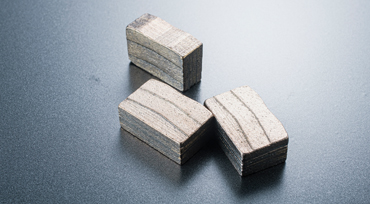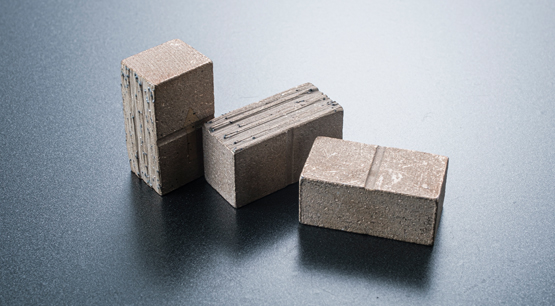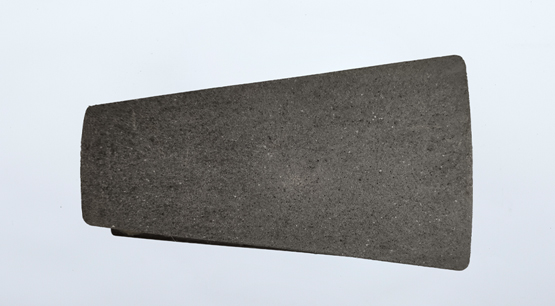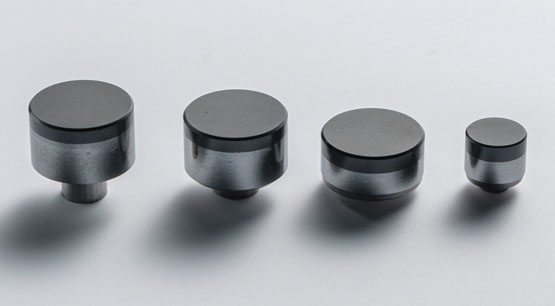During the cutting work of the diamond segment, the friction between the blade and the material to be cut will generate high temperature and high pressure, which will locally melt the material, and the diamond particles will react with the partially melted material at high temperature to form a layer of hard oxide covering the surface of the diamond particles , while the diamond particles form grooves together with the molten material. The shape and size of the groove depends on the nature of the material being cut and the design of the diamond segment. Typically, a groove is a long, slender groove in the shape of a line.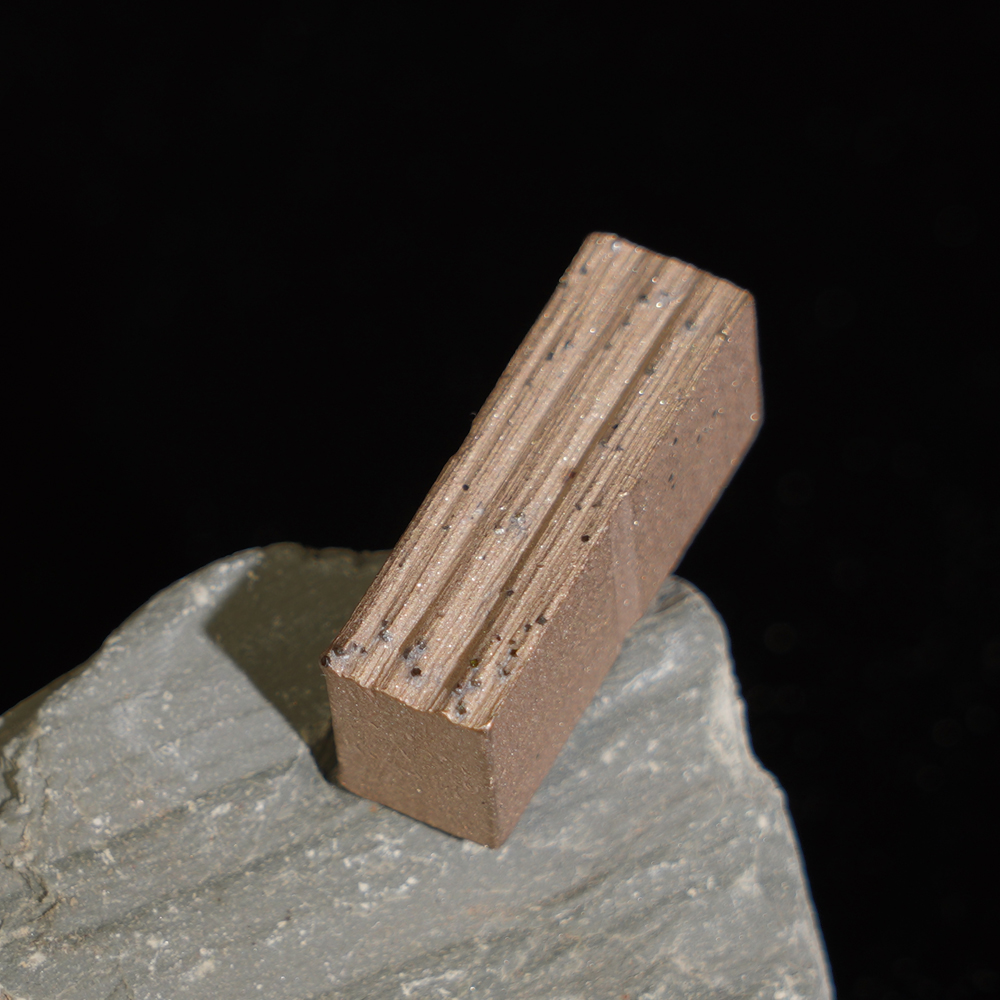 The groove designed of the diamond segment is to increase its heat dissipation capacity and reduce the resistance during cutting. Multilayer and sandwich troughs are two common designs, the main difference being the structure of the troughs.
The groove designed of the diamond segment is to increase its heat dissipation capacity and reduce the resistance during cutting. Multilayer and sandwich troughs are two common designs, the main difference being the structure of the troughs.
The multi-layer groove is composed of multiple parallel grooves. Its main advantage is that it can increase the heat dissipation area of the diamond segment, reduce the temperature of the diamond segment, and prolong the service life. In addition, multi-layer grooves can also increase the stability and cutting performance of the diamond segment.
The design of the multi-layer groove is mostly a combination of working layer and non-working layer. The working layer is a sheet containing diamond in the sheet, while the non-working layer does not contain diamond. Part of the non-working layer adopts a powder structure, and is also composed of a thin iron sheet in the middle. The role of the thin iron sheet is to increase the depth of the groove, thereby improving the cutting performance of the diamond segment. At the same time, the thin iron sheet can also provide better shock resistance of the diamond segment, making the diamond segment more stable.
The sandwich groove is composed of two diamond working layers sandwiching another diamond working layer. The diamond particle size and concentration contained in the two side layers and the middle layer are different. Its structure can improve the wear resistance, impact resistance, and toughness of the diamond segment.
Among them, the diamond layer in the middle is the most important part, which is made by mixing large-grained diamond and metal powder in a certain proportion and is sintered under high temperature and high pressure. The size of diamond particles in this layer is generally between 50-60#, which can provide sufficient cutting force and cutting efficiency. The outer diamond layer is similar to the middle layer, but the diamond particles are smaller, generally between 80-120#, which can provide a finer surface quality and higher cutting accuracy.
The metal interlayer is usually made of copper or other metals, and its function is to fix the diamond layers together and withstand the cutting force and coolant flow during cutting. Sandwich-structured diamond segments have better performance when dealing with different processing tasks, so they are widely used.
In short, the groove design of the diamond segment is to improve its cutting performance and service life. Different groove designs have different advantages and scopes of application, which need to be selected according to specific conditions. Specifically, the design of each diamond segment has its specific advantages and disadvantages, and the specific application depends on the needs and specific conditions. The advantage of the sandwich segment is that it has better cutting stability and higher cutting efficiency, and at the same time has high wear resistance and strength, which is suitable for high efficiency and long-term continuous cutting. The advantage of the multi-layer segment is that it has better impact resistance and wear resistance, and is suitable for situations where frequent turning is required when cutting irregularly shaped items. Therefore, when selecting a diamond segment, it is necessary to decide which structure of the segment to use according to the specific application scenario and requirements. Generally used for cutting marble, limestone, and other soft stones.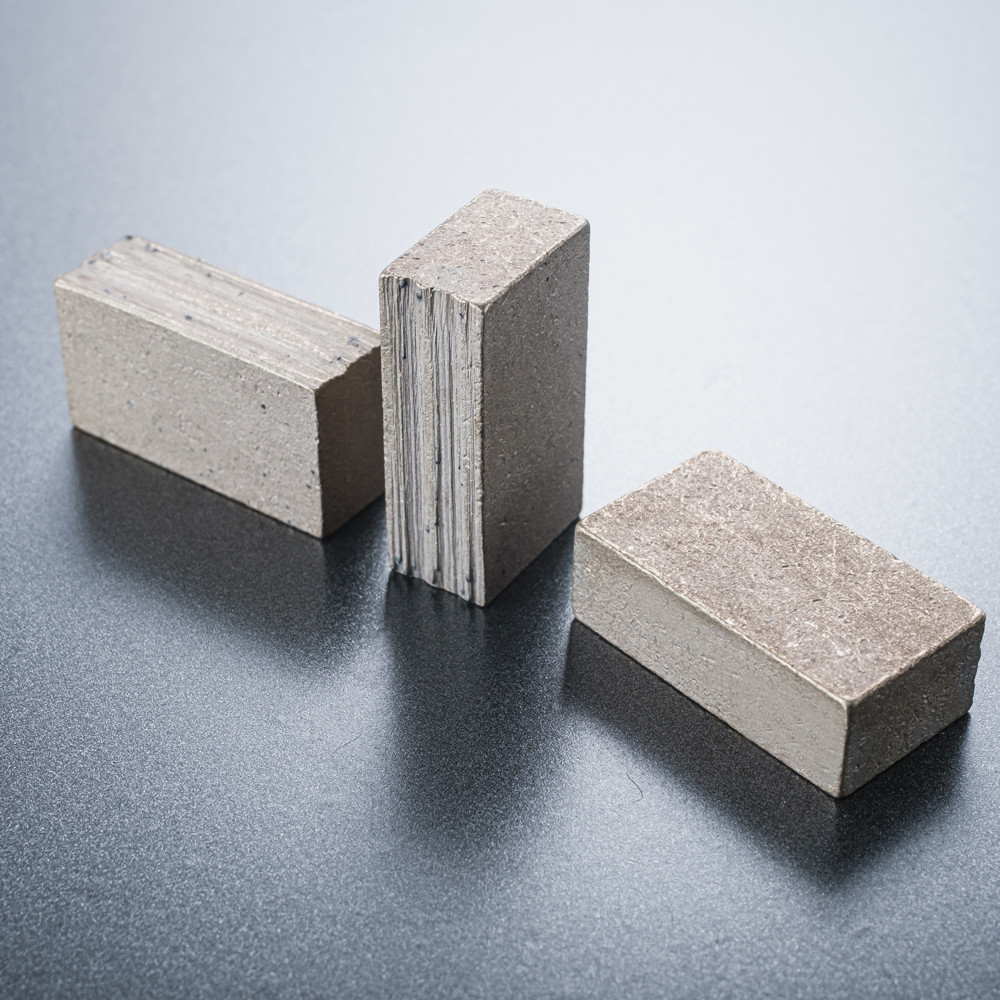 The sandwich segment is different. The advantage of this kind of diamond segment is high cutting efficiency. The more interlayers, the higher the cutting efficiency. The cutting ability and strength will be improved accordingly, but the disadvantage is that in terms of service life, it will be correspondingly reduced. This type of diamond segment is more suitable for cutting hard stones such as granite and sandstone.
The sandwich segment is different. The advantage of this kind of diamond segment is high cutting efficiency. The more interlayers, the higher the cutting efficiency. The cutting ability and strength will be improved accordingly, but the disadvantage is that in terms of service life, it will be correspondingly reduced. This type of diamond segment is more suitable for cutting hard stones such as granite and sandstone.

What's the matter with the groove in the cutting part of the diamond segment?
Publish date:2023-05-08 21:43:34 Article From:Linsing diamond tools Clicks:




